Application Areas
of (functional) electrical stimulation
Functional electrical stimulation (FES) for neural lesions
-for-neural-lesions.png?auto=format&sfvrsn=c17cb942_24)
FES plays an important part in the therapy of paralysed muscles in (partial) denervation after nerve damage/neural lesions. Stimulating muscles as early as possible and ensuring a structured approach can have a positive effect on patients' movement skills at a later stage.
Therapy goals
- Support of nerve regeneration (reinnervation) and nerve growth
- Re-learning of physiological movements and maintaining the visualisation of movement
- Improvement of functional execution of movements
- Maintaining the sense of movement
- Prevention or reduction of denervation-related muscle atrophy
- Preservation of muscular connective tissue structure
- Prevention of inactivity-related fibrosis and accumulation of adipose tissue
- Improved blood circulation
Areas of application
Patients with:
- nerve damage, pareses, or plegia (neurapraxia, axonotmesis, surgically treated neurotmesis) of the radial nerve, ulnar nerve, median nerve, peroneal nerve, tibial nerve, femoral nerve, sciatic nerve, etc.
- nerve root compression (cervical and lumbar)
- brachial plexus injury, lumbosacral plexus injury
- Cauda equina syndrome
- neuropathy (polyneuropathy; CIP)
- Guillain-Barré syndrome (GBS)
- poliomyelitis

Denervated drop foot
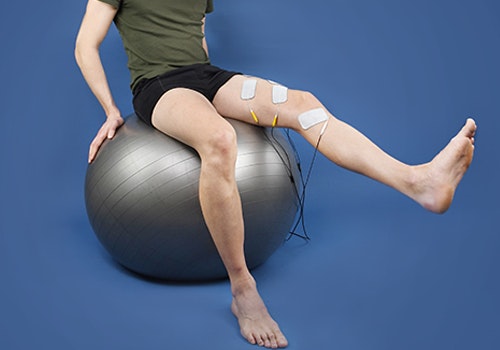
Paresis treatment L4 (EMG)
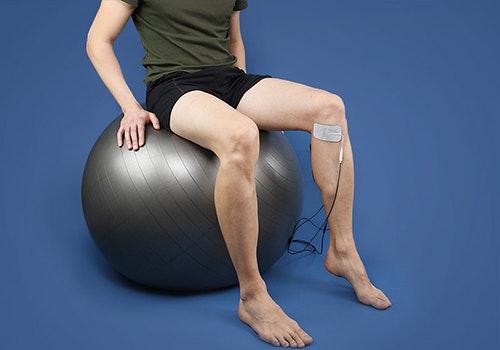
Paresis treatment S1 (EMG)
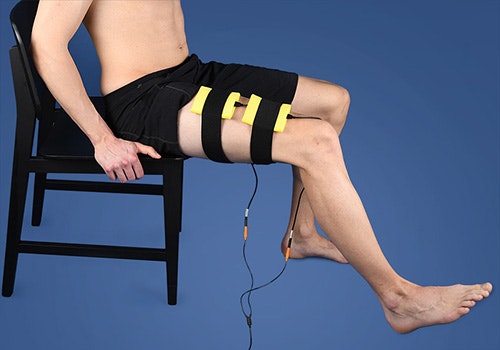
Denervated muscles
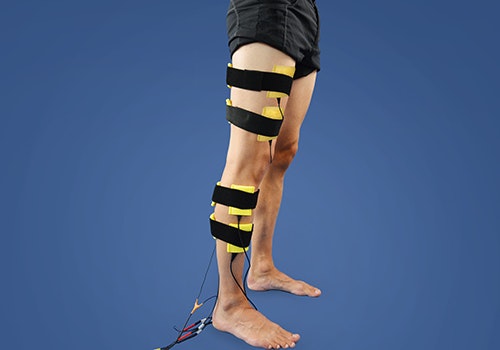
Lumbosacral plexus injury
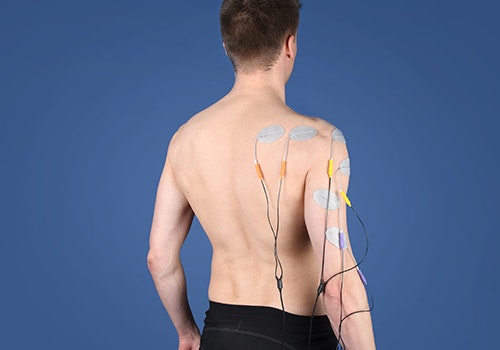
Brachial plexus injury
Nerve regeneration, muscle strengthening, and support for the training of everyday movements
The treatment of denervated muscles differs from the therapy of innervated muscles in terms of current form, frequency, and pulse width. The muscle can be stimulated directly using the STIWELL® in the case of marked denervation. However, the stimulation may change over time due to several factors. The goal is to maintain muscle function until nerves are regenerated. Functional training with EMG-triggered programmes (independently triggered stimulation) can be applied with increasing reinnervation in the course of the healing process.
Added benefits of therapy with the STIWELL®
Stimulating denervated muscles at low frequencies not only helps to strengthen them, but also promotes their reinnervation (Gordon & English 2016). Maintaining and improving the structure of muscle tissue is also important, apart from building up pure muscle mass. Muscle stimulation, which causes the muscle to both contract and stretch, has been shown to counteract fibrosis and accumulation of adipose tissue (Kern et al. 2010).
STIWELL® user stories

Bettina
"I fell from a horse onto a sharp edge and severed my humerus (subcapital humeral fracture)... I was using the STIWELL® daily, and it stimulated my muscles so well that today - 5 months after the accident - I can lift my arm almost as high as before. This would not have been possible without the device..."
Gordon, T., & English, A. W. (2016). Strategies to promote peripheral nerve regeneration: electrical stimulation and/or exercise. European Journal of Neuroscience, 43(3), 336-350.
Kern, H., Carraro, U., Adami, N., Biral, D., Hofer, C., Forstner, C., Mödlin, M., Vogelauer, M., Pond, A., Boncompagni, S., Paolini, C., Mayr, W., Protasi, F., & Zampieri, S. (2010). Home-based functional electrical stimulation rescues permanently denervated muscles in paraplegic patients with complete lower motor neuron lesion. Neurorehabilitation and neural repair, 24(8), 709-721.
